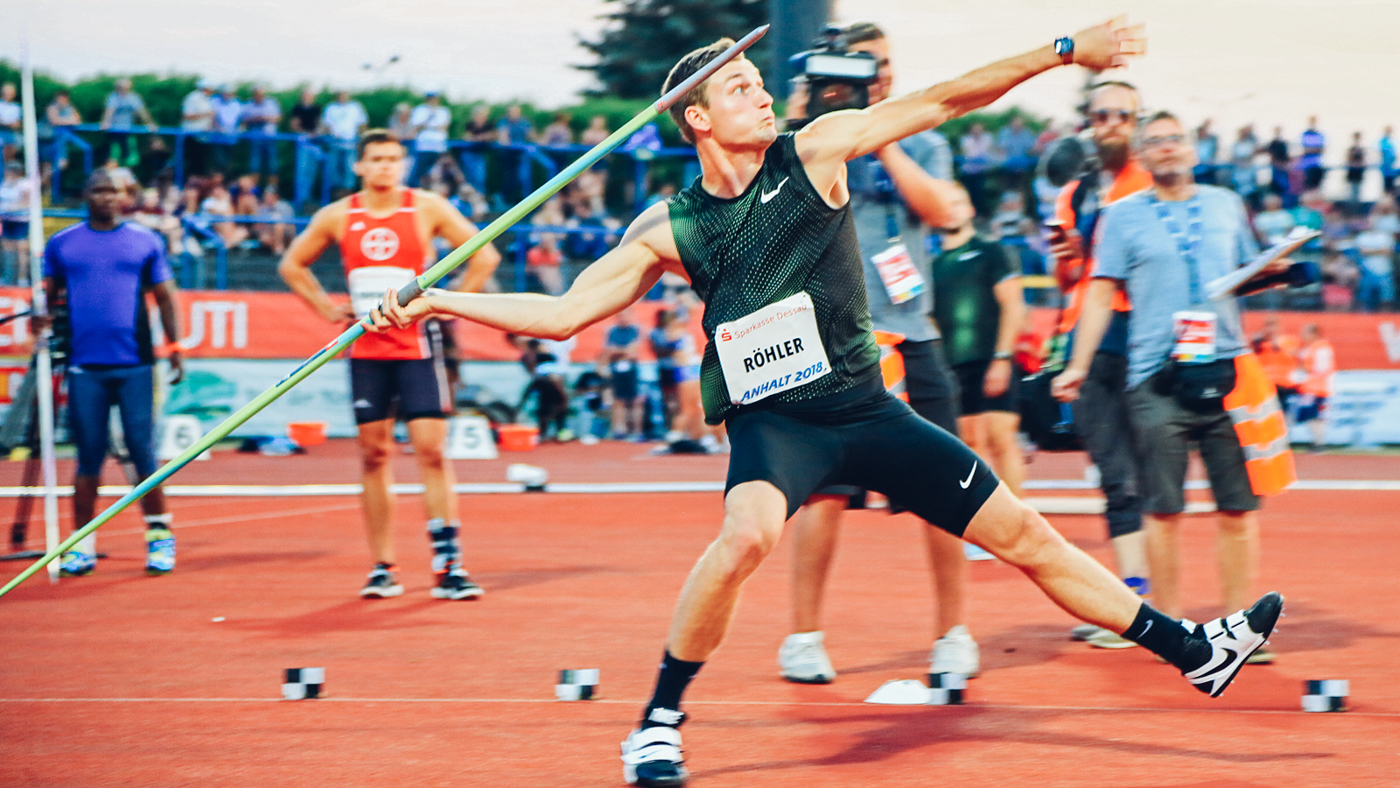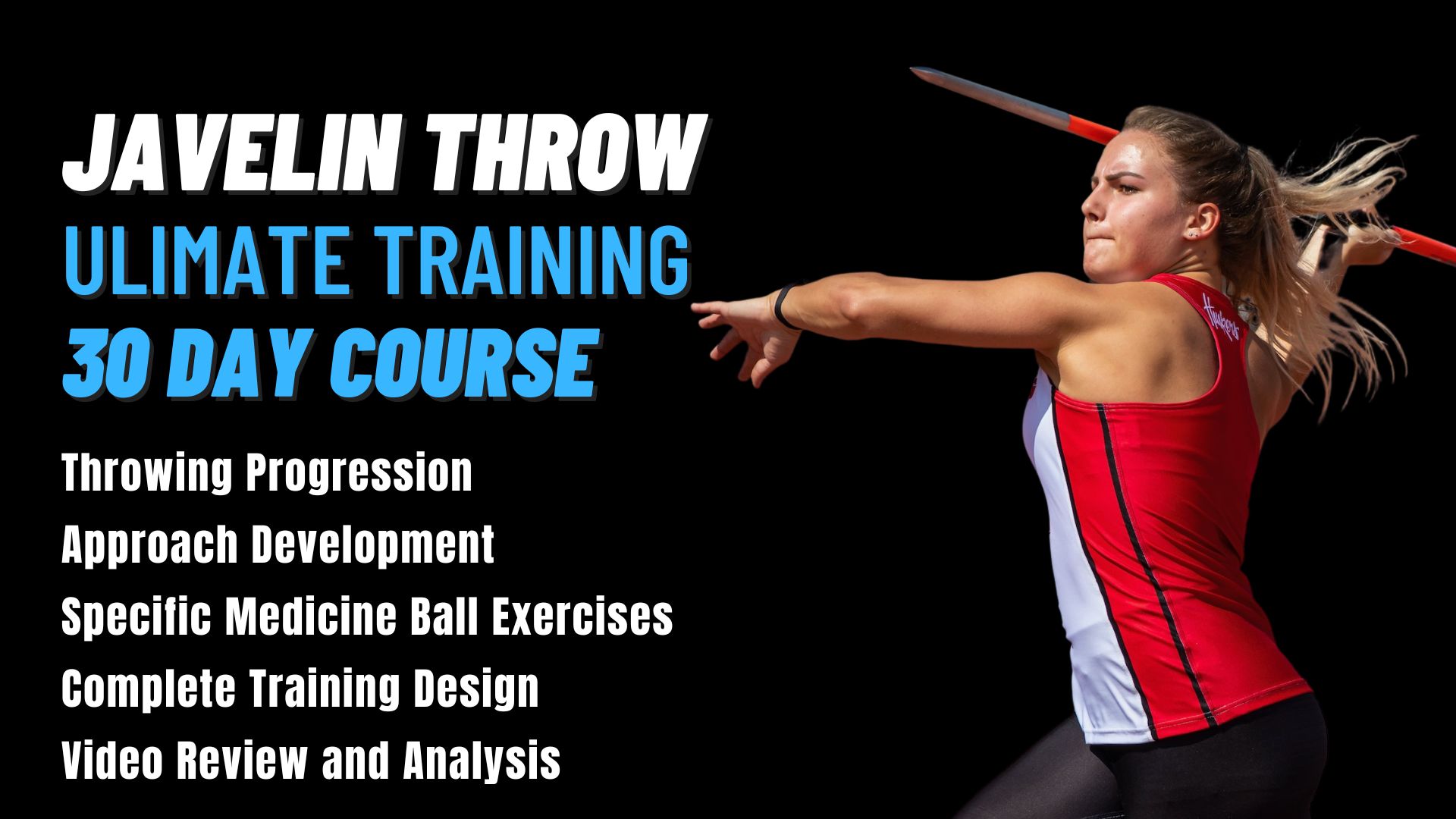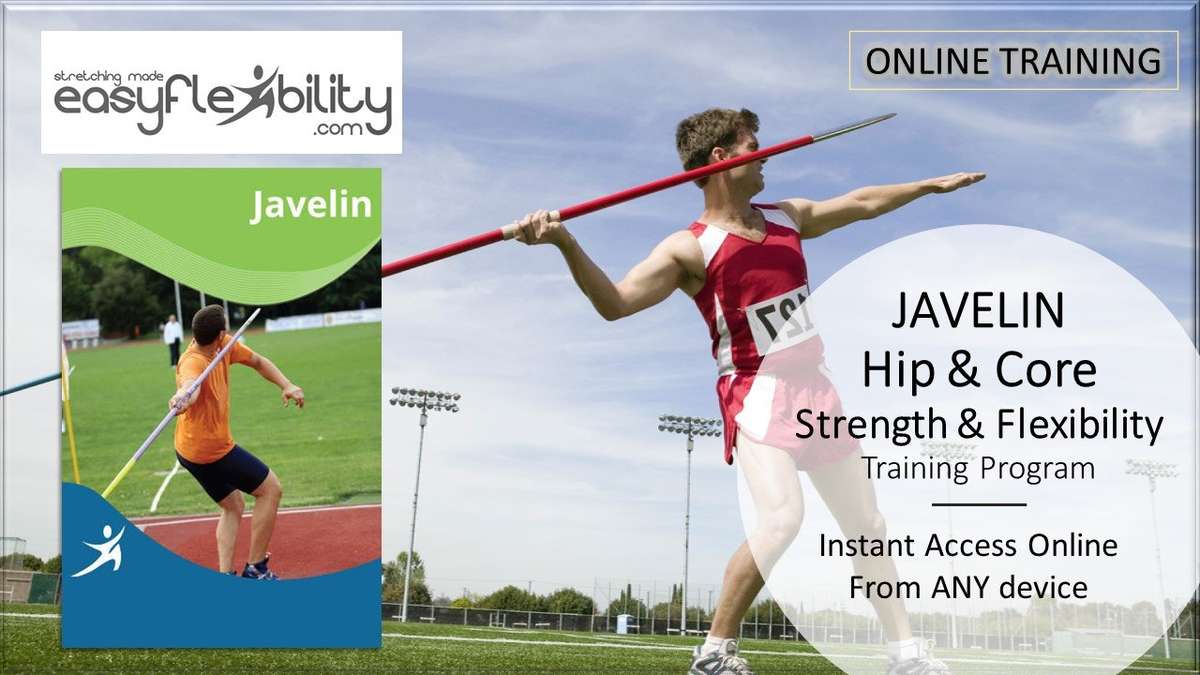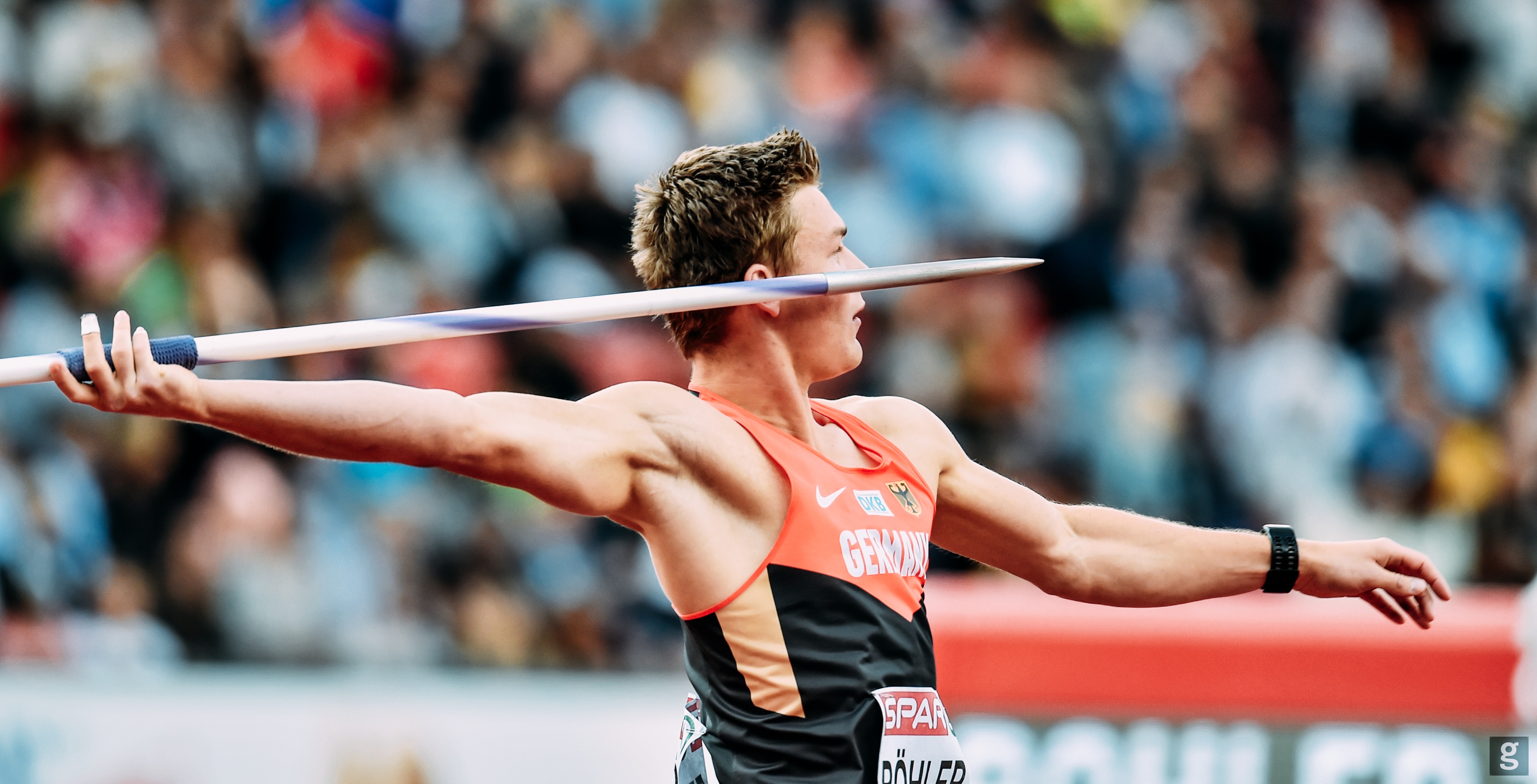The Significance of Conditioning for Javelin Throwing Success
Conditioning programs for javelin throwers play a critical role in enhancing overall performance and minimizing the risk of injuries. A comprehensive conditioning program should encompass various aspects, including strength, power, agility, and endurance. By focusing on these elements, aspiring javelin throwers can optimize their physical abilities and excel in their sport.
Firstly, strength is a fundamental aspect of javelin throwing. A robust and stable core, strong legs, and a powerful upper body contribute significantly to generating the necessary force for a successful throw. Conditioning programs for javelin throwers should, therefore, incorporate exercises that target these areas, ensuring balanced development and improved performance.
Power, another critical component of javelin throwing, involves explosive movements and acceleration. By incorporating power training exercises into a conditioning program, javelin throwers can enhance their ability to generate maximum force in a short period, which is essential for propelling the javelin to its farthest distance. Power training can include plyometric exercises, Olympic lifts, and medicine ball throws, among others.
Agility, often overlooked in conditioning programs for javelin throwers, is equally important. Quickness, coordination, and balance are crucial for maintaining proper form throughout the throw, ensuring accuracy and consistency. Agility training exercises, such as ladder drills, cone exercises, and reaction-based activities, can help javelin throwers develop these essential skills.
Lastly, endurance is vital for javelin throwers, as it enables them to maintain optimal performance throughout their events. By incorporating endurance training into their conditioning programs, javelin throwers can build stamina and resilience, ensuring they remain focused and strong, even in the face of fatigue. Endurance training can include long-distance running, swimming, or cycling, as well as shorter, high-intensity interval training sessions.
In conclusion, conditioning programs for javelin throwers should be well-rounded and multifaceted, addressing strength, power, agility, and endurance. By focusing on these elements, aspiring javelin throwers can significantly improve their performance and minimize the risk of injuries, ultimately achieving greater success in their sport.

How to Create a Customized Conditioning Program for Javelin Throwers
Creating a customized conditioning program for javelin throwers is essential for optimizing performance and minimizing the risk of injuries. By tailoring the program to individual needs, goals, and fitness levels, aspiring javelin throwers can maximize their potential and achieve greater success in their sport. Here is a step-by-step guide on creating a customized conditioning program for javelin throwers:
Step 1: Set Clear Goals
Begin by establishing clear and measurable goals for the conditioning program. These goals should be specific, relevant, achievable, time-bound, and measurable (SMART). Examples of goals for javelin throwers may include increasing throwing distance, improving strength, enhancing agility, or reducing injury risk. By setting specific goals, javelin throwers can create a targeted and effective conditioning program.
Step 2: Assess Fitness Levels
Next, evaluate the current fitness levels of the javelin thrower. This assessment should include measurements of strength, power, agility, and endurance. By understanding the individual’s baseline fitness levels, trainers can design a conditioning program that addresses areas of weakness and builds upon existing strengths. Fitness assessments can be conducted using various methods, including strength tests, agility drills, and endurance challenges.
Step 3: Select Appropriate Exercises
Once goals have been established and fitness levels assessed, select exercises that align with the specific needs and abilities of the javelin thrower. Exercises should be chosen based on their ability to improve strength, power, agility, and endurance. Additionally, exercises should be selected based on their applicability to javelin throwing, ensuring that the conditioning program is relevant and effective.
Step 4: Establish a Training Schedule
Finally, create a training schedule that incorporates the selected exercises and aligns with the javelin thrower’s competition schedule. The training schedule should include a balance of strength, power, agility, and endurance exercises, ensuring that all aspects of fitness are addressed. Additionally, the training schedule should allow for adequate recovery time, ensuring that the javelin thrower can perform at their best during competitions.
In conclusion, creating a customized conditioning program for javelin throwers is essential for optimizing performance and minimizing the risk of injuries. By setting clear goals, assessing fitness levels, selecting appropriate exercises, and establishing a training schedule, aspiring javelin throwers can create a well-rounded conditioning program that addresses their unique needs and abilities. By following these steps, javelin throwers can achieve greater success in their sport and reach new heights in their athletic pursuits.
Essential Exercises for Javelin Throwers: A Comprehensive Guide
Conditioning programs for javelin throwers should include a variety of exercises that target strength, power, agility, and endurance. By incorporating a well-rounded exercise program, javelin throwers can improve their performance and reduce the risk of injuries. Here is a comprehensive guide to essential exercises for javelin throwers:
Strength Training Exercises
Strength training is essential for javelin throwers, as it helps to build a solid foundation for power and explosive movements. The following strength training exercises are recommended for javelin throwers:
- Squats: Squats are a compound exercise that targets the legs, hips, and glutes. They help to build lower body strength and power, which is essential for javelin throwing.
- Deadlifts: Deadlifts are a full-body exercise that targets the legs, back, and core. They help to build overall strength and power, which is essential for javelin throwing.
- Bench Press: Bench press is an upper body exercise that targets the chest, shoulders, and triceps. It helps to build upper body strength and power, which is essential for javelin throwing.
- Pull-ups: Pull-ups are an upper body exercise that targets the back, shoulders, and arms. They help to build upper body strength and endurance, which is essential for javelin throwing.
Power Training Exercises
Power training is essential for javelin throwers, as it helps to improve explosive movements and acceleration. The following power training exercises are recommended for javelin throwers:
- Jump Squats: Jump squats are a plyometric exercise that targets the legs and glutes. They help to build lower body power and explosiveness, which is essential for javelin throwing.
- Box Jumps: Box jumps are a plyometric exercise that targets the legs and glutes. They help to build lower body power and explosiveness, which is essential for javelin throwing.
- Medicine Ball Throws: Medicine ball throws are a power exercise that targets the core and upper body. They help to build explosive power and acceleration, which is essential for javelin throwing.
- Clean and Jerks: Clean and jerks are an Olympic weightlifting exercise that targets the whole body. They help to build overall power and explosiveness, which is essential for javelin throwing.
Agility Training Exercises
Agility training is essential for javelin throwers, as it helps to improve quickness, coordination, and balance. The following agility training exercises are recommended for javelin throwers:
- Ladder Drills: Ladder drills are a agility exercise that targets the legs and feet. They help to improve quickness, footwork, and coordination, which is essential for javelin throwing.
- Cone Drills: Cone drills are a agility exercise that targets the legs and feet. They help to improve quickness, footwork, and coordination, which is essential for javelin throwing.
- Tuck Jumps: Tuck jumps are a plyometric exercise that targets the legs and glutes. They help to improve explosiveness, quickness, and coordination, which is essential for javelin throwing.
Endurance Training Exercises
Endurance training is essential for javelin throwers, as it helps to build stamina and resilience. The following endurance training exercises are recommended for javelin throwers:
- Long Distance Running: Long distance running is a cardiovascular exercise that targets the whole body. It helps to build endurance and stamina, which is essential for javelin throwing.
- Interval Training: Interval training is a cardiovascular exercise that targets the whole body. It helps to build endurance and stamina, which is essential for javelin throwing.
- Circuit Training: Circuit training is a full-body exercise that targets strength, power, agility, and endurance. It helps to build overall fitness and endurance, which is essential for javelin throwing.
In conclusion, conditioning programs for javelin throwers should include a variety of exercises that target strength, power, agility, and endurance. By incorporating a well-rounded exercise program, javelin throwers can improve their performance and reduce the risk of injuries. The exercises outlined in this comprehensive guide are essential for javelin throwers and should be incorporated into any conditioning program.

Strength Training for Javelin Throwers: Building a Solid Foundation
Conditioning programs for javelin throwers must include a strong focus on strength training to build a solid foundation for powerful and accurate throws. By targeting the core, legs, and upper body, javelin throwers can enhance their performance and reduce the risk of injuries.
Strength training is crucial for javelin throwers because it develops the necessary force to propel the javelin. A well-designed strength training program can improve an athlete’s ability to generate power, increase stability, and maintain proper form throughout the throwing motion. Incorporating strength exercises into a conditioning program for javelin throwers should be a priority for coaches and athletes alike.
Here are some essential strength training exercises for javelin throwers:
- Squats: Squats are a compound exercise that targets the legs and glutes, which are essential for generating power during the throw. Athletes can perform bodyweight squats, barbell squats, or goblet squats to build lower body strength.
- Deadlifts: Deadlifts are another compound exercise that works the legs, back, and core. This exercise can help javelin throwers develop the necessary strength to maintain proper posture and balance throughout the throw.
- Bench Press: The bench press is a fundamental upper body exercise that targets the chest, shoulders, and triceps. This exercise can help javelin throwers build the upper body strength required to generate power during the throw.
- Pull-ups: Pull-ups are a bodyweight exercise that targets the back, biceps, and forearms. This exercise can help javelin throwers build the upper body strength required to maintain proper form during the throw and improve grip strength.
- Overhead Press: The overhead press is an upper body exercise that targets the shoulders, triceps, and upper back. This exercise can help javelin throwers build the upper body strength required to generate power during the throw and maintain proper form.
Here is a sample strength training program for javelin throwers:
- Monday: Squats (3 sets of 8-12 reps), Deadlifts (3 sets of 8-12 reps), Bench Press (3 sets of 8-12 reps)
- Wednesday: Pull-ups (3 sets of 8-12 reps), Overhead Press (3 sets of 8-12 reps), Lunges (3 sets of 8-12 reps per leg)
- Friday: Squats (3 sets of 8-12 reps), Deadlifts (3 sets of 8-12 reps), Bench Press (3 sets of 8-12 reps)
In conclusion, strength training is a critical component of conditioning programs for javelin throwers. By incorporating exercises that target the core, legs, and upper body, athletes can build the necessary strength to generate power, improve stability, and maintain proper form throughout the throwing motion. A well-designed strength training program can help javelin throwers improve their performance and reduce the risk of injuries.

Power Training for Javelin Throwers: Enhancing Explosive Movements
Conditioning programs for javelin throwers must include a power training component to enhance explosive movements and acceleration. Power training involves exercises that improve an athlete’s ability to generate force quickly, which is crucial for javelin throwing success.
Power training is essential for javelin throwers because it can help them generate more speed and force in their throws. By incorporating power exercises into a conditioning program, athletes can improve their explosive movements and increase their throwing distance. Power training can also help javelin throwers develop quicker reaction times and improve their overall athleticism.
Here are some essential power training exercises for javelin throwers:
- Medicine Ball Throws: Medicine ball throws are a great power exercise for javelin throwers because they mimic the throwing motion. Athletes can perform overhead throws, chest passes, and rotational throws to build power in the upper body and core.
- Jump Squats: Jump squats are a plyometric exercise that targets the legs and glutes. This exercise can help javelin throwers develop explosive power in their lower body, which is essential for generating force during the throw.
- Box Jumps: Box jumps are another plyometric exercise that can help javelin throwers develop explosive power in their lower body. This exercise involves jumping onto a raised platform, which can help athletes improve their vertical jump and overall explosiveness.
- Kettlebell Swings: Kettlebell swings are a full-body exercise that can help javelin throwers develop power in their hips, legs, and upper body. This exercise involves swinging a kettlebell between the legs and then explosively extending the hips to swing the kettlebell up to shoulder height.
Here is a sample power training program for javelin throwers:
- Monday: Medicine Ball Throws (3 sets of 8-12 reps), Jump Squats (3 sets of 8-12 reps), Box Jumps (3 sets of 8-12 reps)
- Wednesday: Kettlebell Swings (3 sets of 8-12 reps), Broad Jumps (3 sets of 8-12 reps), Sled Pushes (3 sets of 20-30 yards)
- Friday: Medicine Ball Throws (3 sets of 8-12 reps), Jump Squats (3 sets of 8-12 reps), Box Jumps (3 sets of 8-12 reps)
In conclusion, power training is a critical component of conditioning programs for javelin throwers. By incorporating exercises that improve explosive movements and acceleration, athletes can enhance their throwing distance and overall athleticism. A well-designed power training program can help javelin throwers improve their performance and reduce the risk of injuries.
Agility Training for Javelin Throwers: Improving Quickness and Coordination
Conditioning programs for javelin throwers must include agility training to enhance quickness, coordination, and balance. Agility is the ability to change direction quickly and efficiently, which is crucial for javelin throwing success. By incorporating agility exercises into a conditioning program, athletes can improve their reaction times, footwork, and overall athleticism.
Agility training is essential for javelin throwers because it can help them react quickly to their opponents’ moves and adjust their own movements accordingly. By improving their agility, athletes can also enhance their throwing accuracy and increase their throwing distance. Agility training can also help javelin throwers develop better body control and coordination, which can reduce the risk of injuries.
Here are some essential agility training exercises for javelin throwers:
- Ladder Drills: Ladder drills are a great agility exercise for javelin throwers because they improve footwork and quickness. Athletes can perform various ladder drills, such as lateral hops, in-and-out drills, and single-leg hops, to improve their agility and coordination.
- Cone Drills: Cone drills are another excellent agility exercise for javelin throwers. These drills involve setting up cones in a pattern and then performing various movements, such as shuffles, backpedals, and crossovers, to improve agility and quickness.
- Reaction Drills: Reaction drills are a fun and effective way to improve agility and reaction time. These drills involve reacting to a stimulus, such as a light or a sound, and then performing a specific movement, such as a sprint or a jump, to improve agility and quickness.
Here is a sample agility training program for javelin throwers:
- Monday: Ladder Drills (3 sets of 8-12 reps), Cone Drills (3 sets of 8-12 reps), Reaction Drills (3 sets of 8-12 reps)
- Wednesday: Ladder Drills (3 sets of 8-12 reps), Cone Drills (3 sets of 8-12 reps), Reaction Drills (3 sets of 8-12 reps)
- Friday: Ladder Drills (3 sets of 8-12 reps), Cone Drills (3 sets of 8-12 reps), Reaction Drills (3 sets of 8-12 reps)
In conclusion, agility training is a critical component of conditioning programs for javelin throwers. By incorporating exercises that improve quickness, coordination, and balance, athletes can enhance their throwing accuracy and increase their throwing distance. A well-designed agility training program can help javelin throwers improve their performance and reduce the risk of injuries.
Endurance Training for Javelin Throwers: Building Stamina and Resilience
Conditioning programs for javelin throwers must include endurance training to build stamina and resilience. Endurance is the ability to sustain physical activity over an extended period, which is crucial for javelin throwing success. By incorporating endurance exercises into a conditioning program, athletes can improve their overall fitness, increase their throwing distance, and reduce the risk of injuries.
Endurance training is essential for javelin throwers because it can help them maintain their energy levels throughout a competition. By improving their endurance, athletes can also enhance their throwing technique and maintain proper form throughout the entire throwing motion. Endurance training can also help javelin throwers develop better breathing patterns, which can improve their overall performance.
Here are some essential endurance training exercises for javelin throwers:
- Long-Distance Running: Long-distance running is a great endurance exercise for javelin throwers because it improves cardiovascular fitness and endurance. Athletes can perform various long-distance running exercises, such as jogging, running, or cycling, to improve their endurance and overall fitness.
- Circuit Training: Circuit training is another excellent endurance exercise for javelin throwers. These exercises involve performing various exercises, such as push-ups, squats, and lunges, in a circuit format to improve endurance and overall fitness.
- Interval Training: Interval training is a fun and effective way to improve endurance and overall fitness. These exercises involve performing short bursts of high-intensity exercise, followed by short periods of rest, to improve endurance and overall fitness.
Here is a sample endurance training program for javelin throwers:
- Monday: Long-Distance Running (30 minutes), Circuit Training (3 sets of 8-12 reps)
- Wednesday: Long-Distance Running (30 minutes), Circuit Training (3 sets of 8-12 reps)
- Friday: Long-Distance Running (30 minutes), Circuit Training (3 sets of 8-12 reps)
In conclusion, endurance training is a critical component of conditioning programs for javelin throwers. By incorporating exercises that improve stamina and resilience, athletes can enhance their throwing distance and reduce the risk of injuries. A well-designed endurance training program can help javelin throwers improve their performance and achieve their goals.

Monitoring Progress and Adjusting Your Conditioning Program
Conditioning programs for javelin throwers must include regular monitoring and adjustments to ensure continued progress and success. By tracking performance and modifying the program based on individual goals and needs, athletes can optimize their training and achieve their desired outcomes.
Here are some tips for monitoring progress and adjusting your conditioning program:
- Track Performance: Keep a record of your performance in each training session. This can include the number of repetitions, weight lifted, distance thrown, or time spent on a particular exercise. By tracking your performance, you can identify areas of improvement and adjust your training program accordingly.
- Set New Goals: Once you have achieved your initial goals, set new ones to continue challenging yourself and improving your performance. These goals should be specific, measurable, achievable, relevant, and time-bound (SMART) to ensure they are realistic and motivating.
- Modify the Program: Based on your performance and new goals, modify your training program to address any weaknesses or areas for improvement. This may include increasing the intensity, volume, or frequency of certain exercises, incorporating new exercises, or adjusting your training schedule.
Here are some tools and resources for monitoring progress and adjusting your conditioning program:
- Fitness Trackers: Fitness trackers, such as smartwatches or fitness bands, can help you track your performance and monitor your progress over time. These devices can measure various metrics, such as heart rate, steps taken, calories burned, or distance traveled, to provide a comprehensive overview of your fitness level.
- Training Logs: Keeping a training log can help you track your progress and identify areas for improvement. By recording your performance in each training session, you can monitor your progress over time and adjust your training program accordingly.
- Coaches and Trainers: Working with a coach or trainer can provide valuable insights and guidance for monitoring progress and adjusting your conditioning program. These professionals can provide personalized feedback and recommendations based on your individual needs and goals.
In conclusion, monitoring progress and adjusting your conditioning program is essential for continued success in javelin throwing. By tracking your performance, setting new goals, and modifying your training program based on individual needs and goals, you can optimize your training and achieve your desired outcomes. Utilize tools and resources, such as fitness trackers, training logs, and coaches, to help you monitor your progress and adjust your conditioning program as needed.


